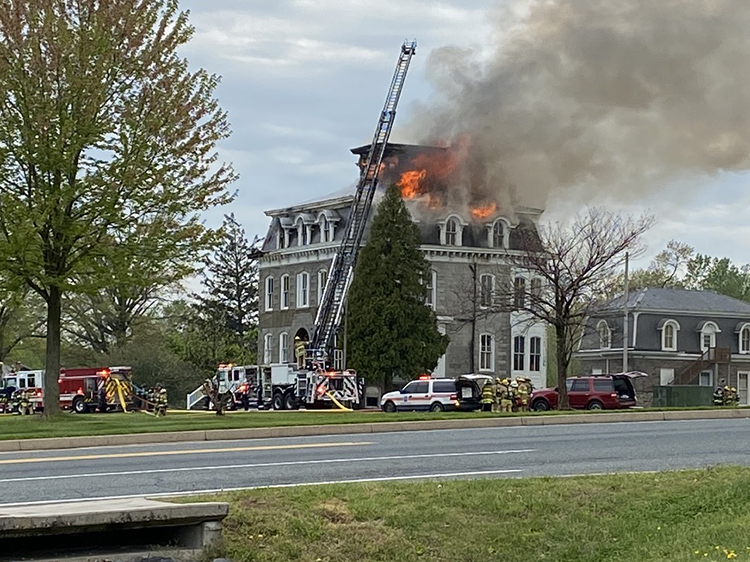
06 May Lessons Learned: Ensuring the Safety of Historical Buildings
At this point in the pandemic everyone is looking for a break in the monotony brought to us by the continued quarantine required of COVID-19 that began in mid-March. However, last Sunday, Mark Hopkins, PE regional director, and sr. fire protection engineer of TERPconsulting’s Mid-Atlantic regional office got a break he was not looking for.
A neighbor texted Mark indicating that the historic structure across the street from his neighborhood was billowing smoke. After calling 9-1-1 and finding out that multiple calls had been placed, Mark and his family started hearing sirens. Apparently, the two-alarm fire was reported to have started in the basement of the Second Empire-style structure known as Fair Meadows located in Creswell, Maryland.
The 2-1/2-story historic home was built for Clement Dietrich in 1868 with balloon style construction, which allowed for fire transfer from the basement to the attic of the structure. It appeared that water volume became an issue as hose streams appeared to control the blaze and suddenly stopped while the fire gained strength. After watching this recurring cycle for a while, the tides turned as a reservoir was established and water tankers from numerous surrounding districts arrived. This eventually allowed firefighters to gain control of the fire. However, the damage to this structure, which was listed on the National Register of Historic Places in 1980, appears to be significant. In place of what was once a beautiful view of this old historical structure through the transom above Mark’s front door will now stand the stately home’s charred remains.
Protecting structures like Fair Meadows with fire detection systems, sprinkler systems, and improving passive fire protection is necessary. Because the home was on the National Register of Historic Places, these measures should have been taken. If fire detection had been provided, the blaze would have been discovered sooner. If sprinklers had been in place, a small fire would have likely been controlled. If passive protection improvements had been made, fire spread would have been limited.
“Events like this are a reminder of why I became a fire protection engineer in the first place,” said Mark, who received both his bachelor’s and master’s degrees in Fire Protection Engineering from the University of Maryland.
Many thanks to all the firefighters working to suppress this fire for several hours. It does not appear that any lives were lost, but this structure is now added to the list of many historic structures that have been lost to fire.
If you have a historical renovation project, TERPconsulting can assist with the fire and life safety assessment of all building types. Please feel free to reach out to Mark with any code questions or project inquiries:
Mark Hopkins, PE
regional director and sr. fire protection engineer, TERPconsulting
mhopkins@terpconsulting.com
+1.410.225.7248






No Comments